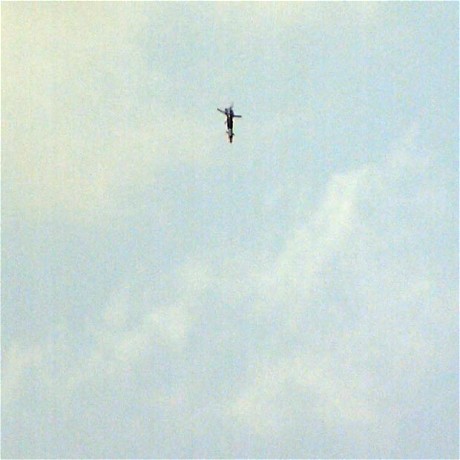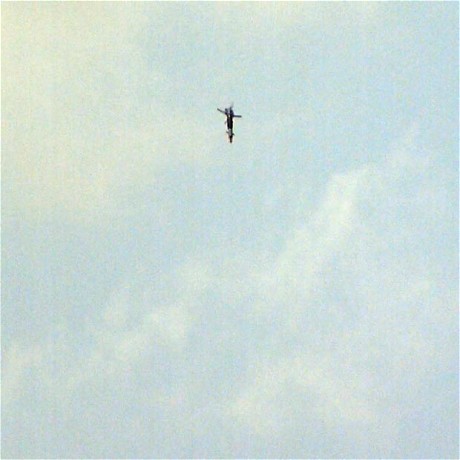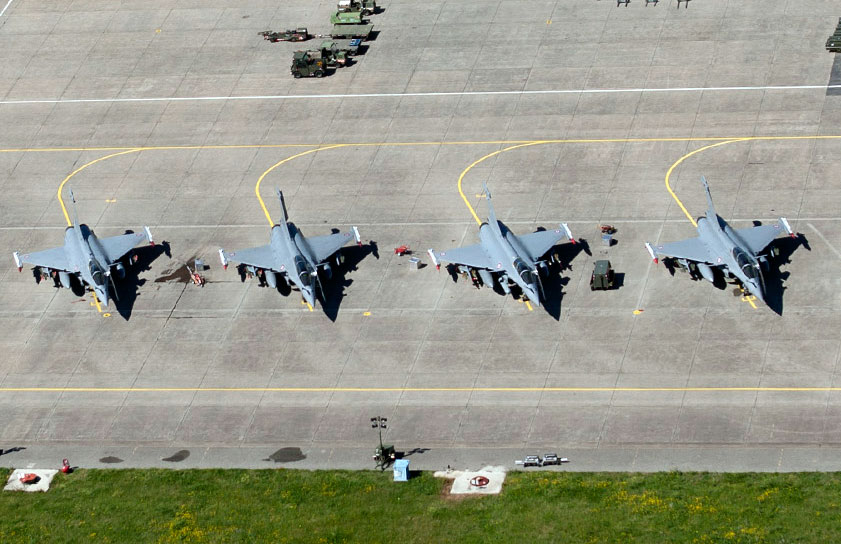Previous debriefings:
- Day 1
- Day 2
- Day 3
- Day 4
- Day 5
- Day 6
- Day 7
- Day 8
- Day 9
- Day 10
- Day 11
- Day 12
- Day 13
- Day 14
- Day 15
- Day 16
- Day 17
- Day 18
- Day 19
Let do a quick recap of what happened on Apr. 7, Day 20 of the Odyssey Dawn then Unified Protector operation.
First of all the day began and ended with the news of two alleged friendly fire episodes. The first, was the one I already mentioned yesterday, about the RAF Tornados hitting an oilfield e Sarir oilfield in the Sirte basin, under rebel control, killing three guards. According to a media release by NATO, the accusation by Colonel Gaddafi that the alliance was responsible for fires in the Sarir Oil Fields is false and is a direct result of his attacks on his own people and infrastructure.
NATO has been monitoring this area since the beginning of the month. Attacks last week by pro-Gaddafi forces have resulted in a number of skirmishes with anti-Gaddafi forces and at least one fire at an oil facility in region of Sarir.
“We are aware that pro-Gaddafi forces have attacked this area in recent days, which resulted in at least one fire at an oil facility north of Sarir,” said Lieutenant General Charles Bouchard, Commander of NATO’s Operation UNIFIED PROTECTOR.
“To try and blame it on NATO is a clear demonstration how desperate this regime is. We have never conducted strike operations in this area because his forces were not threatening civilian population centers from there,” Bouchard said. “The only one responsible for this fire is the Gaddafi regime and we know he wants to disrupt oil getting to Tobruk.”
Hence, since there was no NATO air strikes on ground targets in that area, neither the alliance nor the Royal Air Force can be blamed for the death of the three guards at the oil terminal. So the first one was not a blue-on-blue fire.
The second mishap happened on Day 20, near the eastern town of Brega where five people died and 14 were wounded in an air strike that bombed a rebel tank column near the contested port.
[youtube=http://www.youtube.com/watch?v=rpz8s_lTggc]
In this case there was no need to wait for the NATO to admit its fault since the amateur footage made available on the Internet immediately after the incident had occurred, clearly shows two Paveway bombs hitting a rebel tank. Even if the explaination that the rebel tanks were moving in different directions and were difficult to distinguish who was operating them, what’s really weird is that Rear Admiral Russell Harding, deputy commander of NATO’s ops in Libya (the same who’s now famous and blamed for “not apologising” for the airstrikes), affirmed that until yesterday, in spite of the pictures available on the internet, the alliance didn’t know that the rebels were operating tanks. According to the rebels, they are operating some 400 tanks and NATO was informed that they were moving T55 and T72 heavy tanks from Benghazi to Brega.
Source: Libya State via The Telegraph
In the aftermath of the incident, BBC had reported the words of a rebel spokesman who had said that the air strike on the tanks column was carried out by pro-government forces, using SIAI SF-260 planes rather than by Nato.
Other interesting things, information and thoughts:
1) Since the beginning of the NATO operation (31 March 2011, 08.00GMT) a total of 1170 sorties and 473
strike sorties have been conducted. On Apr. 6, 164 sorties (73 air strikes).
2) Sky News reported that the military intervention in Libya could lead Prime Minister David Cameron to rethink Britain’s defence budget recently cut with the famous SDSR. The report says that changes could include U-turns on plans to cut the Tornado GR4 fleet and to scrap surveillance planes. Noteworthy, both Sentinels and Nimrods, to be retired as a consequence of the SDSR, have been constantly flying vital ELINT missions out of Akrotiri.
Is the same rethink going to be prompted elsewhere?
3) The Swedish Air Force flew the first sortie in support of Unified Protector on Apr. 8. Two aircraft flew a brief 30 minute-long mission (it’s hard to believe they have been able to reach the Libyan airspace considering the distance from the NFZ). Dealing with the fuel problem, a visitor of this site wrote me that the problem was actually that the Swedish detachment had ordered the fuel for Sigonella, but the Italian logistics failed to deliver it when agreed. I’ve been asked to comment. I don’t know if this is true even if I can’t rule out the possibility that the shipment was not delivered on time because of an Italian fault but, as a general rule, a good Project Manager must be able to advance this type of “failures”, especially when the scheduled “work” (in this case the delivery of the fuel) is a requirement for having the aircraft ready for the mission.
Source: Swedish AF and NATO
4) There are also pictures showing TuAF F-16s taking off with a/a missiles from Sigonella in the last few days, even if I haven’t found any official confirmation of the deployment (even if I had mentioned the Turkish Air Force F-16s were expected). The RDAF flew the usual 4 missions dropping 4 bombs. Looks like they are the only ones to be able to drop bombs each time they fly. So far they have performed 62 missions dropping 150 bombs. The French MoD instead of providing the details of the last 24 hours, has issued a recap of the roles and missions flown since Mar. 31.
Between Thursday, March 31, 2011 at 6:00 ET Thursday, April 7, 2011 to 0600, France has made nearly 900 flight hours:
- 120 support and air interdiction sorties;
- 24 reconnaissance sorties;
- 13 AEW sorties;
- 22 AAR sorties with the C-135s and 28 buddy sorties with the Rafale and SEM;
- 22 sorties CAP sorties from Souda Bay
During such missions air strikes were carried out as follows:
- A tank west of Misratah (01 April);
- Five armored vehicles in the Sirte region (Apr. 2);
- Two tanks in the Ras Lanuf area (Apr. 3);
- A military vehicle southwest of Brega (05 April);
- Two SAM sites, one in southern Zlitan and the other one a hundred miles south of Sirte (Apr. 6).
Source: French MoD
The Italian contingent, made of 12 aircraft, flew 108 missions since the beginning of Odyssey Dawn. During the last 24 hours, the Italian AF and Navy flew a total of 8 missions (each with 2 planes): 2x Typhoons, 3x Tornado ECRs, 3x AV-8B+ Harrier. Some fully armed Typhoons belonging to the 36° Stormo were photographed landing in Trapani. It’s still unclear wheter they are airframes belonging to the Gioia del Colle-based Wing flown by 4° Stormo pilots or they are flying with crews of the 12° or 10° Gruppo in direct support of Unified Protector.
5) The role of the Italian Navy Harriers deserves a few more words, following specific requests of explaination I’ve received by the thousands visitors of this blog. After reading in some forums and message boards that the AV-8B Harriers are used only for the air-to-ground role, someone guessed for which reason the Italian jump jets were reported by the Italian MoD to be flying in the air defence role. Simply, they are flying air defence sorties because the AV-8B+ Harriers serving with the Italian and Spanish Navy, similarly to what happened with the now retired Royal Navy Sea Harriers, are multirole aircraft whose primary role is the air defence of the fleet and aircraft carrier from which they operate (as the Sea Harriers in the Falkland War) with an air-to-ground secondary role being capable of performing Close Air Support with a wide variety of weapons. Unfortunately there are a bunch of wannabe experts that, on this and other subjects, in this period, are giving incorrect information.














